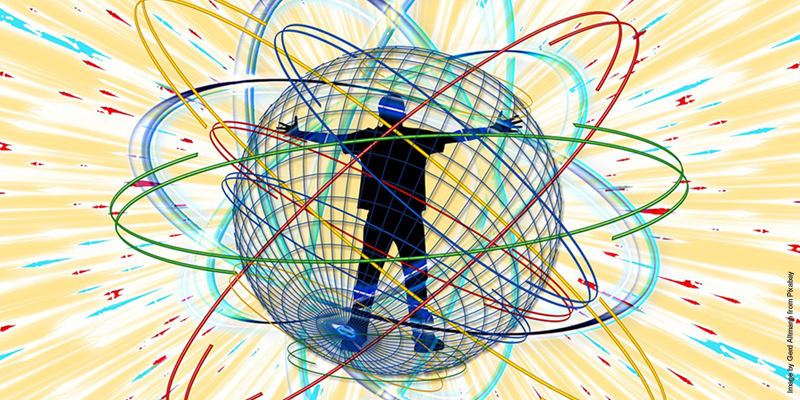From a technical perspective, new technologies have created the opportunity to build Smart Cities that are able to collect and analyse huge amounts of data. On top of the analyses, the data is used to automate processes and improve the quality of services. This ultimately enables decision-makers to find faster and better solutions.
Some major aspects of Smart Cities are:
- Places where digital high-tech converts into improved public services and infrastructure, more sustainable use of resources and higher focus on environmental protection
- Places with advanced Information and Communication Technologies (ICT) for the benefit of society and business
- Places and their public administrations working together in an interactive and responsive manner to meet the needs of the population
Why Smart Cities are Important for Society and Business
By 2030, – according to the United Nations – metropolitan areas are projected to house 60 percent of the global population and one in every three people will live in large cities with a minimum of 0.5 million inhabitants. What kind of challenges for society and business does this development include? More people means the need for better infrastructures. This requires to process and analyse data from citizens, technical devices, and assets in terms of traffic management, public transport, power plants, water supply networks, waste management, community services and tons more. The growth in population also means we have to use our limited resources in a sustainable way. Here, increasing energy efficiency is crucial on many levels and holds a number of benefits in storage:
- Financial savings for society and business
- Increased energy security for society and business through more resources for future generations
- Businesses create new jobs, increase their profitability and benefit society
- Spurring innovations to make work- and social life more comfortable
These aspects lead to one overarching goal: Improve the quality of life.
The following short overview of the most important objectives of Smart Cities gives an idea of what is meant by improving the quality of life:
Increase energy efficiency in terms of costs and consumption
Sustainable use of available resources
- Increase Accessibilities
- Intelligent handling of existing urban areas
- Future-oriented infrastructures
- Smart public transport solutions
- Modern and digitised public services
- Innovative technology development and related business models
- Make wise use of data to offer added-value solutions
All these objectives are highly important, the focus here lies specifically on the last two. Innovative technology development and related business models and make wise use of data to offer added-value solutions.
These two Smart Cities objectives are powered by space data, respective applications and services. To understand the link from space data to Smart Cities, a closer look to the Earth observation (EO) programme Copernicus is necessary.
Earth observation Makes Cities Smarter
The Copernicus programme provides valuable data for Smart Cities. 10 Petabytes of free EO data is generated by the Copernicus Programme every year. This data enables the Copernicus services to deliver near-real-time data on a global level, contributing toward the sustainable management of the environment. The data is sourced both from the family of Sentinel satellite missions, contributing missions (existing commercial and public satellites) and from a multitude of in situ sensors. This enables Copernicus to contribute to the development of a wide variety of innovative applications and services tailored to specific public or commercial needs. As a result, business opportunities are emerging in air-quality forecasting, flood warning systems, early detection of drought and desertification, early severe-weather warnings, oil-spill detection, forest monitoring, changes in land use and food security – to name just a few areas. Big data from space holds great potential for the development of ideas and solutions in many (non-space) sectors.
Smart decision making is crucial, especially in the context of the human desire to improve people’s quality of life in growing cities all around the world. To make smart decisions, data is absolutely essential. This data needs to be accurate, constantly available and comparable over long period of time and always up-to-date. Exactly these characteristics are given for EO data from space.
Europe’s largest innovation competition for Earth observation applications, the Copernicus Masters, has the mission to scout the most brilliant EO ideas and turn them into business.
This year’s Airbus Multi-Data Challenge of the Copernicus Masters is specifically looking for solutions in the field of Smart Cities. Startups, SMEs, students, developers, researchers, space and data enthusiasts can submit their ideas until 30 June 2018.
Airbus Multi Data Challenge Provides Data worth EUR 100,000
The Airbus Multi Data Challenge of the Copernicus Masters, by Airbus Defence and Space, offers data worth EUR 100,000 to its participants. This challenge is looking for solutions that use both Sentinel and Airbus Earth observation data to deliver value-added services for specific communities and markets, including Smart Cities, Maritime, Defence & Security, Forestry, and Agriculture. Inventive people with idea solutions for other markets are also eligible to enter the Challenge. Solutions should be technically feasible, commercially viable and clearly show the connection between Copernicus and Airbus EO data.
To support the prototyping of such new value-added services, participants of the Airbus Multi-Data Challenge will receive free access to numerous datasets via its OneAtlas Sandbox Platform: www.intelligence-airbusds.com/sandbox. Pléiades, SPOT, TerraSAR-X, WorldDEM, and DMC Imagery sets, Machine Learning samples and various APIs are available through the platform for participants to combine with Sentinel data for the development of their solutions. Additional data sources, such as IoT, AIS, GPS, Open data etc., may also be used in the solution. The use of this Sandbox Platform is also open to participants of other Copernicus Masters Challenges.
What makes Smart Cities smart? The answer lies in a combination of data sources. And Earth observation data offered by Copernicus is a very powerful and important component.
Author: Matthias Engler is a Content Manager with AZO Anwendungszentrum GmbH Oberpfaffenhofen (www.space-of-innovation.com)
Subscribe to our newsletter
Stay updated on the latest technology, innovation product arrivals and exciting offers to your inbox.
Newsletter

